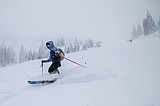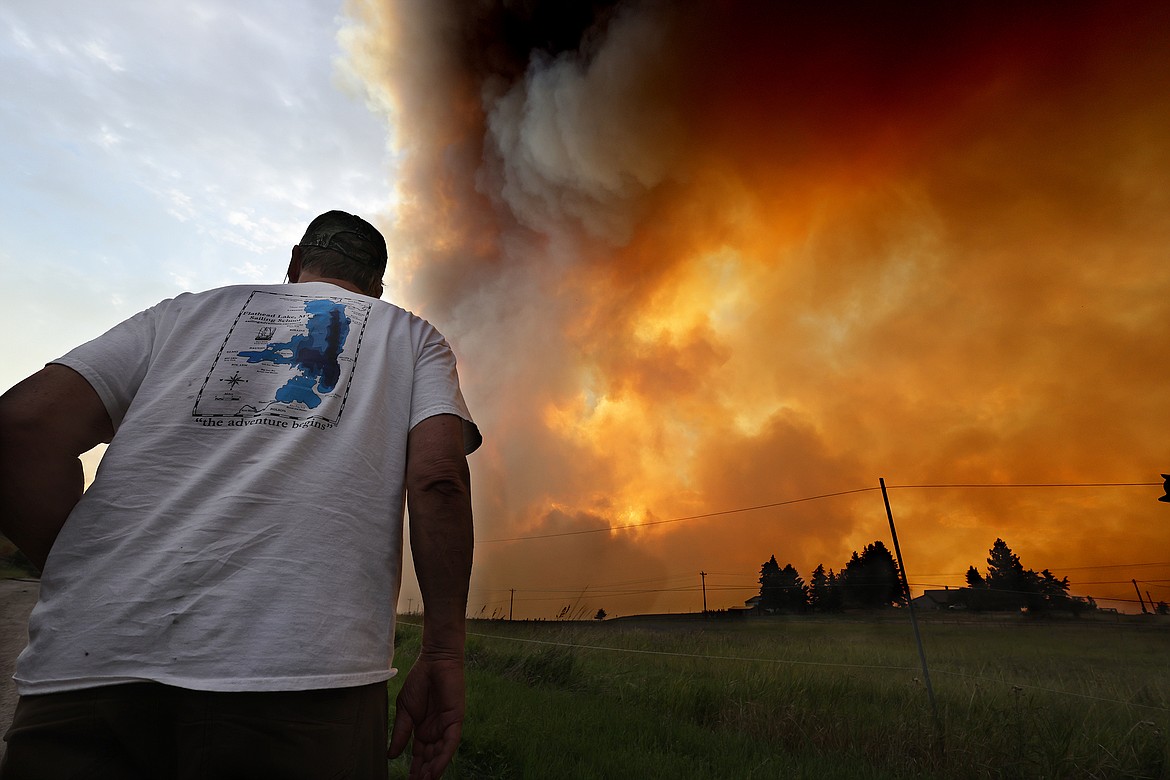2022 recap: Quiet wildfire season finished with $52M price tag
KATE HESTON | Hagadone News Network | UPDATED 2 years, 11 months AGO
Kate Heston covers politics and natural resources for the Daily Inter Lake. She is a graduate of the University of Iowa's journalism program, previously worked as photo editor at the Daily Iowan and was a News21 fellow in Phoenix. She can be reached at [email protected] or 406-758-4459. | December 26, 2022 11:00 PM
The final cost of Montana’s wildfire suppression efforts in 2022 came in at $52 million, with nearly 125,000 acres burned statewide in what was a relatively subdued season.
Due to early summer moisture and a later start, the season reflected the last few years of wildfire in Montana and the Flathead — strange.
According to the Montana Department of Natural Resources and Conservation (DNRC), 2,063 fires burned 124,997 acres throughout Montana this year. About 44% of those fires were human caused. Air quality ratings statewide mainly stayed between “moderate” and “unhealthy for sensitive groups.”
On the Flathead National Forest, there were 47 fire starts in 2022 and 10,871 acres burned, according to Rick Connell, a fire management officer who focuses on the Flathead National Forest. This is an increase in damage compared to 2021 and 2020, where 3,754 acres and 5,428 acres burned, respectively. According to Connell, the past five years have consistently been average or below average seasons.
One notable fire in 2022 near Flathead County was the Elmo Fire west of Flathead Lake, which was detected July 29 and burned 21,349 acres. Although local volunteer fire departments and the Missoula Smokejumpers responded quickly, the fire grew significantly in the first few hours. High temperatures and strong winds pushed the fire north and east, requiring evacuations. Eight structures were lost, including four primary residences.
Overall, this year's fire season was “relatively small,” according to Julia Berkey, the community preparedness and wildlife prevention program manager at the DNRC. Spring rains lasted longer, helping to prevent a bigger season.
Experts generally attribute the increase in fire intensity over recent years to climate change, Connell said, but he added that forest fire has cycled through phases since the beginning of time.
In the Flathead area, according to a data set curated by Connell, 1,233,000 acres burned from 1889-1930. However, only 40,000 acres burned between 1930 and 1979. From 1980-2018, an increase was seen again: 1,076,716 acres.
Nationally, there has been an increase in wildland fire intensity in the past few decades. According to the National Interagency Fire Center, nearly 7.5 million acres burned in 2022 across the U.S., which is above the 10-year average.
In the context of larger trends and the absence of reliable, historic fire data, however, it is hard to attribute the increase in wildfires to global warming alone. To many firefighters and experts, wildfire is a natural recycler.
“Fires have always been in the landscape here and they always will be,” said Lincoln Chute, the Flathead County fire warden. Vegetation in the Flathead Valley has grown up and adapted with fire as a disturbance.
“If there was nobody here, there would still be fire,” Connell said.
At the end of December, DNRC reported having spent just over $16 million on fire suppression. DNRC had a $54 million budget for fire suppression at the beginning of the fiscal year, which began on July 1.
In 2022, total fire costs in Montana finished at over $52 million. The upcoming legislative session this next January will determine the agency’s 2023 wildlife budget.
At the beginning of the season, Gov. Greg Gianforte said he would prioritize an aggressive initial suppression strategy, stating that Montana would not let fires burn. Gianforte also increased the base hourly pay rate for seasonal firefighters by $1.70 to $15.50. The DNRC is currently in a hiring phase, ensuring that staff is ready for next season.
As for what 2023 will bring, Connell said it’s hard to predict what kind of season the state will have. When people ask that question, Connell asks them in return what color the tomatoes will be in the summer — no one knows. It is the same with wildfires.
“Mother Nature bats last,” Connell said.
Reporter Kate Heston can be reached at [email protected]
ARTICLES BY KATE HESTON

Veteran-owned mobile boat repair service anchors down in the Flathead Valley
The Kramers launched Flathead Mobile Marine to use their skills — they have decades of experience performing routine maintenance checks on a variety of boats as well as working with engines and electrical systems — and help boaters in the community.

With ski season near, resort reaches deal with staff
After 18 months of negotiations, Whitefish Mountain Resort executives and the resort’s ski patrol union are finalizing a one-year contract for the upcoming season.

Trapped in a car wreck, Woods Bay woman credits teens with saving her life
Driving home from a quilting event in Bigfork in September of last year, Carol Martin remembered that the sky was clear, the sun was shining, and she had a headache.

